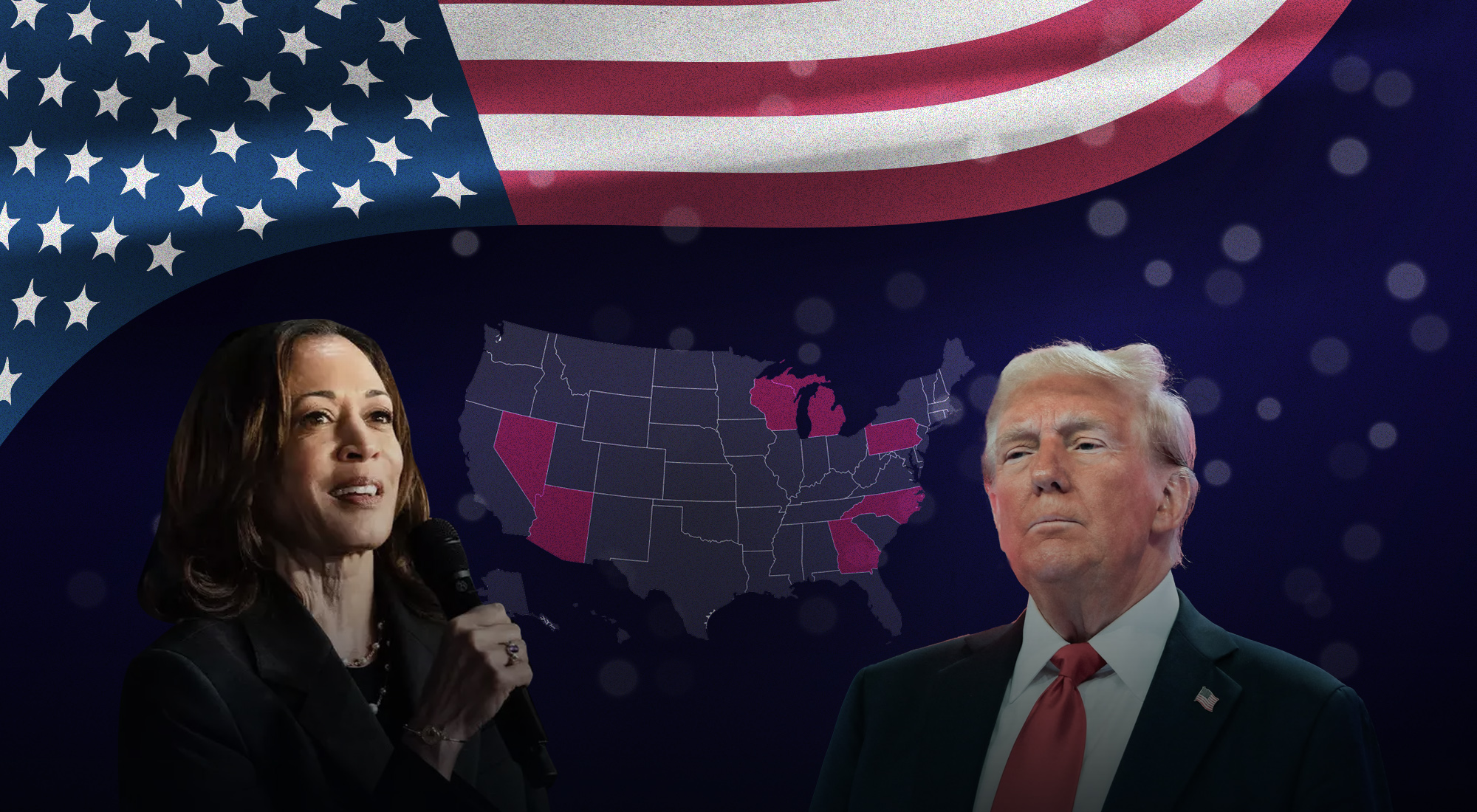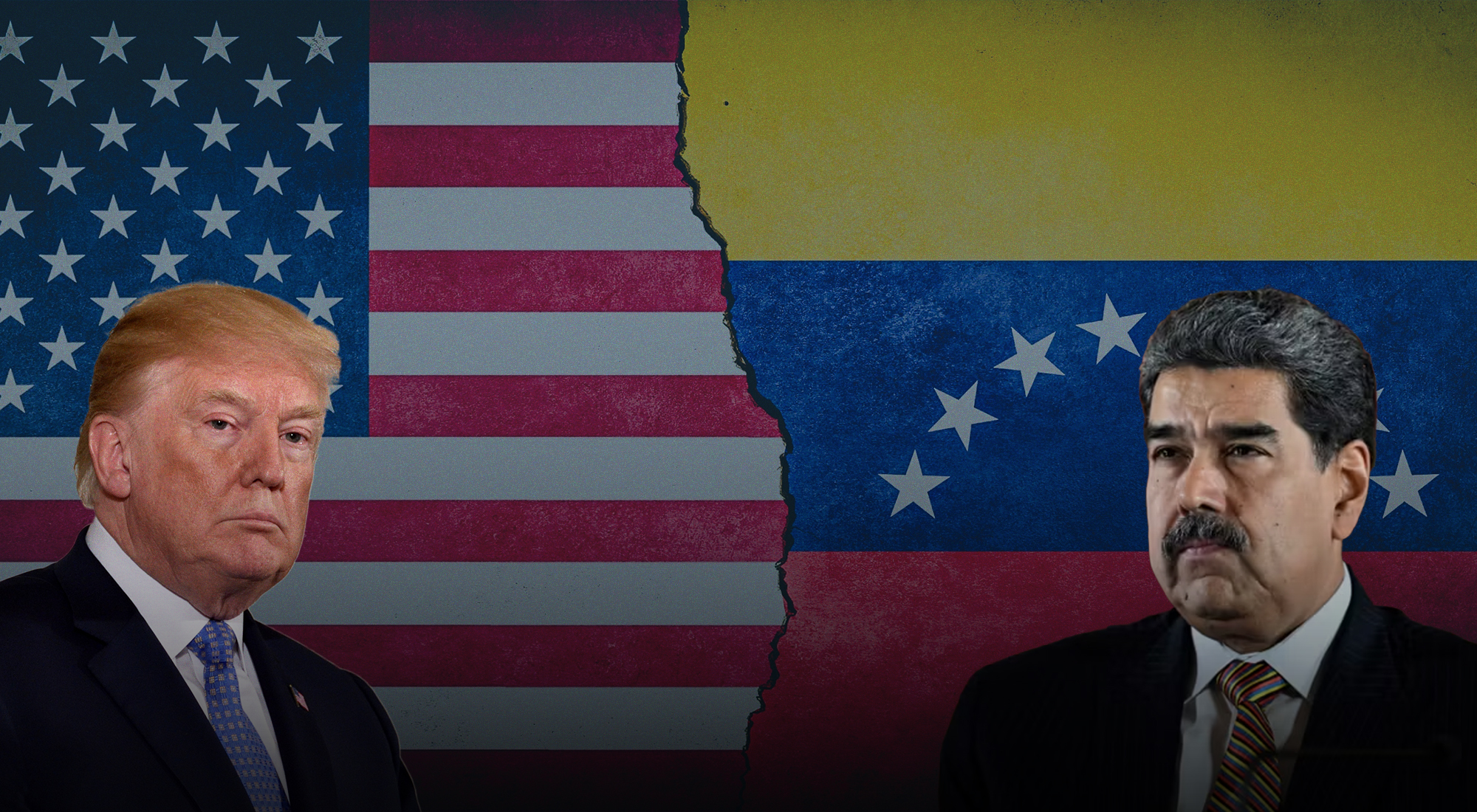The upcoming U.S. presidential election on 5 November is expected to be a tightly contested race, with key swing states likely to play a decisive role in determining the outcome. The 2024 election could come down to just a few thousand votes in seven battleground states, underscoring this year’s high stakes. In addition to the narrow margins, the country remains deeply polarized, with political divisions firmly entrenched across the American electorate.
Vice President Kamala Harris has positioned her campaign as one of hope and change, with a central focus on strengthening the middle class. Her platform includes cutting taxes for middle-income families, expanding access to affordable housing and childcare, and reducing healthcare costs. Harris also emphasizes the importance of supporting small businesses and entrepreneurs, ensuring they have the necessary funding to innovate and grow in a competitive economy.
In contrast, former President Donald Trump’s campaign largely echoes the themes of his 2020 bid. He continues to portray himself as the “Champion of the People,” with a strong focus on tightening immigration controls, including sealing U.S. borders and calling for mass deportations. His platform also emphasizes raising tariffs on imported goods to protect American industries and aims to position the U.S. as the world’s leading energy producer by boosting domestic energy output.[1]
These two contrasting views—one that envisions a strong, thriving middle class and the other that prioritizes nationalism and economic protectionism—highlight the stark differences in the candidates’ approaches to shaping America’s future. A recent Pew Research poll found that if the election were held today, the electorate would be nearly evenly split. The survey indicates that 49% of registered voters would be equally likely to support either former President Trump or current Vice President Harris.[2] This razor-thin margin underscores the intensity of the race and the crucial role undecided voters will play in determining the final outcome.
The critical undecided voter
Trump, running for the third time since 2015, and Harris are both focused on winning over the crucial undecided or swing voters, who make up roughly 15% of the electorate.[3] Political Scientist William G. Mayer defines swing voters as “a voter who could go either way: a voter who is not so solidly committed to one candidate or the other as to make all efforts at persuasion futile.”[4] The swing vote in 2024 holds the potential to be a decisive force, capable of tipping the scales in what promises to be an intensely competitive election.
Undecided voters can be divided into multiple groups. While some are skeptical or conflicted about both candidates, others are waiting for concrete, actionable plans from either side before making their decision. A growing concern for some undecided voters is that, despite Harris presenting herself as more “presidential” and outlining her vision for tax reform and economic policy, she remains closely tied to President Joe Biden.[5] Many in this group are seeking a fresh start and may view Harris as too connected to the current administration’s policies.
Although key issues for swing voters in 2024 include women’s reproductive rights, immigration, and inflation, historically, the electorate has tended to favor candidates they believe can strengthen the economy. Undecided voters also tend to be less persuaded by ‘identity politics’ meaning they choose to overlook the fact that Harris would be the first woman of color—or more importantly, the first female candidate to win a presidential election—and remain focused on the issues and how each candidate’s policies will impact them directly.[6]
In the critical swing states of Arizona, Pennsylvania, Nevada, Wisconsin, North Carolina, Georgia, and Michigan, undecided voters make up anywhere between 0.6% and 2.4% of the electorate. While these numbers may seem minuscule, in tight battleground state races, even a small shift in voter preferences could prove decisive. These states’ electoral votes will be crucial in securing the nomination, as candidates must reach 270 electoral votes to win the presidency, making undecided voters a key factor in determining the outcome of the election.
| Swing State | Electoral votes, per state | Percentage of undecided voters, per state | Percentage of voters supporting Trump, per state | Percentage of voters supporting Harris, per state |
| Arizona | 11 | 1% | 50.4% | 47.3% |
| Georgia | 16 | 2.1% | 48% | 48.9% |
| Michigan | 15 | 2.4% | 46.5% | 49.9% |
| Nevada | 6 | 0.6% | 47.9% | 49% |
| North Carolina | 16 | 1.7% | 49.1% | 48.1% |
| Pennsylvania | 19 | 2.2% | 48.2% | 48.3% |
| Wisconsin | 10 | 1.5% | 49.1% | 48.3% |
Source: Vox & New York Times
Project 2025
Potentially to Trump’s advantage—or disadvantage—depending on the voter, Project 2025 emerged in 2023—written as a right-wing conservative playbook for the next Republican President. Backed with a $22 million budget, the 920-page document published by the conservative think tank, the Heritage Foundation, which has helped shape and staff Republican administrations since the Reagan era, is a blueprint that, if implemented, would construct the most conservative Executive Branch in U.S. Presidential history.
Critics of Project 2025, which advocates for the dismantling of the “Administrative State,” argue that the agenda would fundamentally undermine democracy, erode long-standing political norms, and strip the government of essential checks and balances. These safeguards, established by the founding fathers, were designed to ensure a separation of powers, prevent authoritarianism, and protect individual liberties.
On the other hand, Paul Dans, the Director of Project 2025 and one of its chief architects, presents the project as a blueprint for decisive governance. He asserts that the playbook is designed to ensure that, from day one, a newly elected Republican president will be supported by “a new army of aligned, trained, and weaponized conservatives” prepared to confront what he describes as the entrenched “deep state.”[7]
In addition to calling for the elimination of investments in climate change initiatives and green subsidies, Project 2025 aims to dismantle the National Oceanic and Atmospheric Administration (NOAA), describing it as “one of the main drivers of the climate change alarm industry” and harmful to U.S. prosperity. The project also outlines plans to eliminate the Departments of Education and dismantle the Department of Homeland Security (DHS), which is described in Project 2025 as “bloated, bureaucratic, and expensive,” adding that DHS has “suffered from the Left’s wokeness” and has been weaponized “against Americans whom the Left perceives as its political opponents.”
Moreover, it proposes a significant transformation of the Federal Bureau of Investigation (FBI), asserting that the FBI Director “must remain politically accountable to the President”[8]—essentially allowing the President to control the reins of the bureau. This marks a stark departure from current norms, wherein the FBI has historically operated under a degree of independence to prevent political interference and uphold impartiality in law enforcement. Trump has long vowed to overhaul the Department of Justice, frequently criticizing the legitimacy of the various investigations into him, including those related to his efforts to overturn the 2020 election.[9]
The agenda also calls for the largest deportation in U.S. history, stating, “Prioritizing border security and immigration enforcement, including detention and deportation, is critical if we are to regain control of the border, repair the historic damage done by the Biden Administration, return to a lawful and orderly immigration system, and protect the homeland from terrorism and public safety threats.” While immigration reform remains a top priority for voters, it is important to recognize that one of the key factors behind the U.S.’s swift recovery following the global COVID-19 pandemic, especially in comparison to its European allies,[10] was the combination of large-scale government stimulus and an influx of migrants. These migrants helped fill labor shortages, providing a workforce that drove productivity and boosted economic output.
For many on the left, Project 2025 is viewed as a product of today’s divisive culture wars. The agenda frequently uses polarizing terms like “woke” and asserts that one of its primary goals is to counter what it sees as the growing influence of extreme leftist ideologies. It claims that “the long march of cultural Marxism through our institutions has come to pass” and argues that the current government has “weaponized” itself against the American public and conservative values. The project positions itself as a defense against perceived, yet unsubstantiated, threats—primarily that freedom and liberty are under siege.
On the right, recent media backlash against Project 2025 has led many to distance themselves from the initiative, including Trump, for whom the agenda was initially designed in anticipation of his potential return to office this fall. This distancing may be reinforced by voter reactions, as reflected in an Economist/YouGov poll published in August. The poll, which surveyed 1,618 U.S. adults, found that 46% held an unfavorable opinion of Project 2025.[11] In July, Trump took to his social media platform, Truth Social, posting, “I know nothing about Project 2025,” adding, “I have no idea who is behind it. I disagree with some of the things they’re saying and some of the things they’re saying are absolutely ridiculous and abysmal.”[12]
The challenge with this statement, however, is that Project 2025 was created by a number of Trump’s former and current allies and advisors, including people inside his former administration. Out of the document’s 38 primary authors, at least 28 worked in the Trump Administration, according to a line-by-line review conducted by CBS News.[13] Former Trump staffers who served as contributing Project 2025 authors include Housing and Urban Development Secretary Ben Carson, former acting Secretary of Defense Christopher Miller, and economic adviser Peter Navarro.[14] Furthermore, in 2022, during a dinner sponsored by the Heritage Foundation, Trump spoke highly of the organization, telling guests the foundation is going to “lay the groundwork and detail plans for exactly what our movement will do” after he’s re-elected.[15]
Project 2025 Pillars
As a means to overhaul the Executive Branch in line with a conservative vision, Project 2025 is framed upon four pillars to ensure the next Republican President is equipped on day one with a vetted and trained “army” of aligned conservatives with the objective of deconstructing the purported administrative “deep state.”
| Pillar I: Policy | The Project 2025 document consolidates a consensus on how major federal agencies should be governed. Differences of opinion are bracketed for the next President to decide on the direction. |
| Pillar II: Personnel | A personnel database allowing candidates to build profiles and coalition members to review and recommend candidates. These recommendations will be compiled and shared with the President-elect’s team to streamline the appointment process. |
| Pillar III: Training | The Presidential Administration Academy, an online educational system offering expert-taught courses. It provides newcomers with an understanding of government operations and offers in-person seminars for advanced training to experienced leaders. |
| Pillar IV: Playbook | The Playbook forms agency teams and drafts transition plans to be deployed upon the President’s inauguration. |
Pillar I is thoroughly outlined in the nearly 900-page policy agenda titled Mandate for Leadership: The Conservative Promise, which is self-described as “a plan to unite the conservative movement and the American people against elite rule and woke culture warriors.” The publication is divided into five sections: Taking the Reins of Government, The Common Defense, The General Welfare, The Economy, and Independent Regulatory Agencies, each addressing key areas where the authors believe substantial changes are necessary to reshape the federal government according to conservative principles.
This mandate serves as the foundational blueprint for Project 2025, clearly presenting the justification for broad reforms within the Executive Branch—bypassing traditional legislative and partisan roadblocks. However, such an undertaking would likely face legal challenges, as overhauling and gutting federal agencies without congressional oversight or approval would almost certainly lead to lawsuits questioning the constitutionality and legality of such actions.
A key proposal is the repeal of the Inflation Reduction Act, the largest investment in climate change initiatives in U.S. history. The mandate calls for rescinding any unspent funds allocated as subsidies for renewable energy developers, aiming to reduce government support for green energy projects. Additionally, it seeks to abolish energy efficiency standards for appliances, claiming that current regulations restrict consumer choice, drive up costs, and overly prioritize energy efficiency at the expense of other important factors, such as cycle time and ease of repair.
In further opposition to current climate change efforts, the plan also stresses that environmental concerns, such as global warming, should not be used as grounds for halting liquefied natural gas (LNG) projects. This stance highlights a broader push to prioritize traditional energy sectors over renewable alternatives, emphasizing economic and energy security considerations over environmental protection.
The mandate also calls for the reissuance of Trump’s Schedule F Executive Order, which President Biden rescinded upon taking office. Schedule F allowed for the reclassification of federal employees in policy-making and advisory roles, effectively stripping them of certain job protections typically afforded to federal workers. This decision was deemed controversial by the Biden Administration as it was seen as a threat to the impartiality of the federal workforce, raising concerns over politically motivated firings.
Other such proposals include a comprehensive review of all major ongoing FBI investigations and activities, with the goal of ending any that are deemed illegal or contrary to the national interest. Critics on the left view this as politically motivated, especially given the numerous investigations and charges brought against former president Trump. Furthermore, the mandate suggests issuing an executive order banning taxpayer-funded critical race theory (CRT) training and urges Congress to pass a law prohibiting such funding. This issue has been highly controversial, with opponents claiming that CRT promotes division and a negative view of U.S. history, while supporters argue it is vital for understanding systemic racism.
The mandate also proposes banning Chinese social media platforms like TikTok and WeChat and prohibiting Chinese investments in high-tech industries. Additionally, it calls for a significant reduction or elimination of visas issued to Chinese students and researchers to prevent espionage and information harvesting. Lastly, it suggests reforming or developing an alternative to the World Trade Organization (WTO) that would be open exclusively to liberal democracies.
Pillar II involves the creation of an HR database, described as a “Conservative LinkedIn.”[16] This platform, which already has over 10,000 applicants, will be utilized by the next Republican administration to identify and hire vetted potential employees. This right-wing pool of “loyalist” staffers will be strategically positioned to serve the next Republican president, ready to step into key government positions on day one. The goal is to streamline the hiring process and ensure that those selected are aligned with the administration’s conservative values and agenda, allowing for a quicker and more coordinated transition into power.
The concern with this approach is that it prioritizes partisanship and loyalty over professional experience within federal agencies, regardless of political affiliation. This emphasis on political allegiance is why reinstating Schedule F is seen as a key objective for the next Republican administration, whether led by Trump in 2024 or another candidate in 2028. If reinstated, Schedule F could reclassify up to 50,000 career employees in policy-shaping roles[17]—such as legal and political experts, engineers, and scientists—into a new job category. This reclassification would make it significantly easier to remove and replace them with individuals whose primary qualification is unwavering loyalty to the conservative agenda.
Pillar III consists of a tailored right-wing, skill-building hub, dubbed the Presidential Administration Academy. This fully online program is offered for vetted political appointees to better understand the expectations of how to function as a future conservative bureaucrat. For more experienced personnel and those in higher-level positions, seminars and advanced training opportunities are provided in person.
Pillar IV represents the “Presidential Playbook,” which consists of actionable transition plans to be undertaken for each federal agency during the president’s first 180 days in office. Typically, a president’s first few months in office are reserved for setting the administration’s priorities, introducing key policies, forming a cabinet, and navigating early legislative battles. However, this playbook outlines an aggressive plan to rapidly implement sweeping reforms, bypass traditional delays, and cement the administration’s agenda from the very start. One proposed plan includes reinstating Schedule F to ensure the next administration remains in complete control over who stays and will be forced to leave key government agencies.
Keeping a distance
Agenda 47, the official set of policy recommendations from Trump’s re-election campaign, has been repeatedly emphasized by Trump and his team as the sole agenda in response to public backlash. Trump’s campaign spokesperson, Karoline Leavitt, clarified this distinction, stating, “Agenda 47 is the only official policy agenda from our campaign”[18] and further distancing the campaign from other efforts by adding, “Project 2025 is not related to our campaign and does not reflect official campaign policy.”[19] However, this statement presents a challenge, as many of Trump’s policy proposals for a second term closely align with the conservative goals outlined in Project 2025. Despite efforts to separate the two, there is significant overlap between the principles of Agenda 47 and the broader conservative agenda, making it difficult for Trump’s campaign to fully distance itself from the Conservative manifesto.
On one hand, much of Trump’s base—his core group of supporters known for their unwavering loyalty and deep personal connection to him and his political ideology—will likely remain steadfast, regardless of whether he supports Project 2025 or not. These voters are committed and unlikely to waver in their support, staying with Trump for the long term. The admiration of Trump’s hard-core set of voters does not stem from his policy proposals and vision for the country; it’s about the man himself and what he represents to them. The concern for Trump therefore is the undecided voter. He must walk a fine line between the supporters of Project 2025 and voters who remain skeptical of his intentions to redefine the inner workings of the U.S. government.
Conclusion
The objectives and proposed reforms outlined in Project 2025 represent an effort by the far-right conservative wing of the Republican Party to formalize and institutionalize the principles of the Make America Great Again (MAGA) movement, ensuring they remain embedded in the fabric of U.S. governance. The aim is to shape U.S. policy well beyond a potential future Trump presidency.[20] By mirroring many of the proposals found in Agenda 47, Project 2025 remains heavily influenced by the rise of populism associated with Donald Trump, particularly its emphasis on isolationist and nationalist approaches to both domestic and foreign policy.
This election will come down to swing and undecided voters, many of whom view Trump as the “disruptor” candidate—a figure with a proven track record of challenging political norms and shaking up Washington’s status quo. However, while his bravado appeals to some, it also risks alienating voters who may feel fatigued by the unpredictability of his approach, potentially pushing them toward Harris, who promises to offer steady leadership, which many feel is needed after years of political dysfunction.
To secure a win in 2024, Trump must prioritize appealing to suburban and college-educated women, the youth vote, and minorities in the key battleground states—many of whom do not view Project 25 as aligning with their values this election cycle. These diverse and growing voter groups often determine the outcome in key swing states, making them essential for building a winning coalition. While a significant portion of Trump’s base strongly supports Project 25 ideals, relying solely on his core supporters—roughly 30% to 40% of the Republican electorate[21]—may not be sufficient to ensure victory. Trump must carefully navigate his indirect support for Project 25 without alienating key swing voters.
Meanwhile, the Harris campaign will likely continue linking Trump’s Agenda 47 to Project 2025, portraying them as interconnected efforts that share a unified vision for the future—one that may go beyond what many undecided voters feel matches the needs of their families or aligns with their values. With nearly 68 million Americans relying on Social Security benefits each month—totaling nearly $1.5 trillion in benefits for 2024 alone,[22] Project 2025’s plans to cut Social Security, Medicare, and the Affordable Care Act (ACA) could alienate older key voters. These programs provide financial security and health coverage to millions, including the 45 million people currently insured through the ACA,[23] making any proposed cuts a significant concern for those dependent on such services.
The test for Harris, however, is to differentiate herself from the Biden administration, which remains a challenge considering her integral role as Vice President. She must convincingly project a version of herself that signals independence and fresh leadership, reassuring undecided voters that her past affiliations do not define what her future presidency would look like.
[1] Donald J. Trump, Platform. Donald J. Trump for President (n.d.), https://www.donaldjtrump.com/platform.
[2] “In tied presidential race, Harris and Trump have contrasting strengths, weaknesses,” Pew Research Center, September 9, 2024, https://www.pewresearch.org/politics/2024/09/09/in-tied-presidential-race-harris-and-trump-have-contrasting-strengths-weaknesses/.
[3] Michel Martin, “Undecided voters in focus groups reveal skepticism of both Harris and Trump,” NPR, September 4, 2024, https://www.npr.org/2024/09/04/nx-s1-5098114/undecided-voters-in-focus-groups-reveal-skepticism-of-both-harris-and-trump.
[4] William G. Mayer, “The swing voter in American politics,” Brookings Institution, 2006, https://www.brookings.edu/wp-content/uploads/2016/07/swingvoterinamericanpolitics_chapter.pdf.
[5] Campbell Robertson, Jeremy W. Peters, and Jack Healy, “Pundits said Harris won the debate. Undecided voters weren’t so sure,” The New York Times, September 11, 2024, https://www.nytimes.com/2024/09/11/us/politics/undecided-voters-react-debate.html.
[6] “Focus group skeptical voters believe Trump is more of an agent of change than Harris [Video], Meet the Press,” NBC News, September 10, 2024, https://www.nbcnews.com/meet-the-press/video/focus-group-skeptical-voters-believe-trump-is-more-of-an-agent-of-change-than-harris-218262085517.
[7] “Project 2025: Staffing the next conservative administration,” The Heritage Foundation, April 29, 2023, YouTube video, https://www.youtube.com/watch?v=QTd5g9NYue8.
[8] Project 2025, “Mandate for leadership: The conservative promise,” The Heritage Foundation, 2023, https://static.project2025.org/2025_MandateForLeadership_FULL.pdf.
[9] Levien, S. J., “What is Project 2025, and why is Trump disavowing it?,” The New York Times, September 11, 2024, https://www.nytimes.com/article/project-2025.html.
[10] Scarborough, J., Brzezinski, M., & Geist, W. (Hosts), Episode 924 [Audio podcast episode], In Morning Joe, MSNBC, September 10, 2024.
[11] YouGov, The Economist/YouGov poll, August 4–6, 2024, https://d3nkl3psvxxpe9.cloudfront.net/documents/econtoplines_OHhDhBP.pdf.
[12] Donald J. Trump, [@realDonaldTrump]. “I know nothing about Project 2025. I have no idea who is behind it. I disagree with some of the things they’re saying and some of the things they’re saying are absolutely ridiculous and abysmal. Anything they do, I wish them luck, but I have nothing to do with them,” [Post], Truth Social, July 5, 2024, https://truthsocial.com/@realDonaldTrump/posts/112734594514167050.
[13] John Kelly, “Hundreds of proposals in Project 2025 match Trump’s policies,” CBS News, August 22, 2024, https://www.cbsnews.com/news/project-2025-proposals-trump-policies/.
[14] Alec Dent, “Trump 2024 vs. Project 2025: The campaign denies anything to do with the blueprint for a second term, but his alumni are all over it,” New York Magazine, July 21, 2024, https://nymag.com/intelligencer/article/trump-2024-vs-project-2025.html.
[15] Vaughn Hillyard and Alexandra Marquez, “Trump disavows Project 2025, but he has long-standing ties to some key architects,” NBC News, July 12, 2024, https://www.nbcnews.com/politics/donald-trump/project-2025-trump-heritage-foundation-what-know-rcna161338.
[16] Alec MacGillis, “The man behind Project 2025’s most radical plans,” Wisconsin Examiner, September 3, 2024, https://wisconsinexaminer.com/2024/09/03/the-man-behind-project-2025s-most-radical-plans/.
[17] Ibid.
[18] Andy Kroll and Nick Surgey, “Watch: 14 hours of never-before-published videos from Project 2025’s Presidential Administration Academy,” ProPublica, August 10, 2024, https://www.propublica.org/article/video-project-2025-presidential-training-academy-trump-election.
[19] Alec Dent, “Trump 2024 vs. Project 2025: The campaign denies anything to do with the blueprint for a second term, but his alumni are all over it.”
[20] Ibid.
[21] David Jackson, “’The Trump Party’: Here’s why Donald Trump’s supporters are calling the shots with Republicans ahead of 2024,” USA Today, December 11, 2023, https://www.usatoday.com/story/news/politics/elections/2023/12/11/donald-trump-republicans-base-2024/71850190007/.
[22] Social Security Administration, “Fact Sheet: Social Security,” June 2024, https://www.ssa.gov/news/press/factsheets/basicfact-alt.pdf.
[23] U.S. Department of Health and Human Services, “Celebration of 10 years of ACA marketplaces: Biden-Harris administration releases historic enrollment data,” March 22, 2024, https://www.hhs.gov/about/news/2024/03/22/celebration-10-years-aca-marketplaces-biden-harris-administration-releases-historic-enrollment-data.html.









